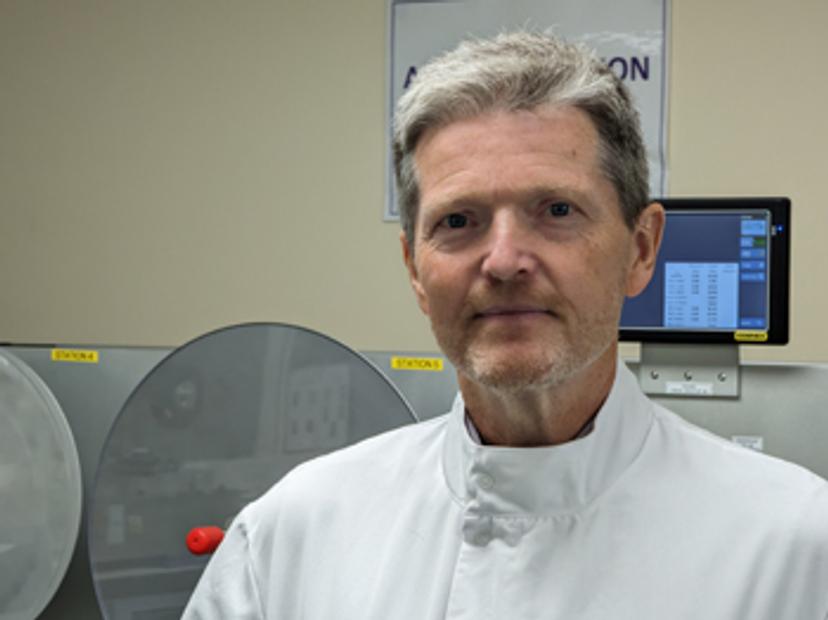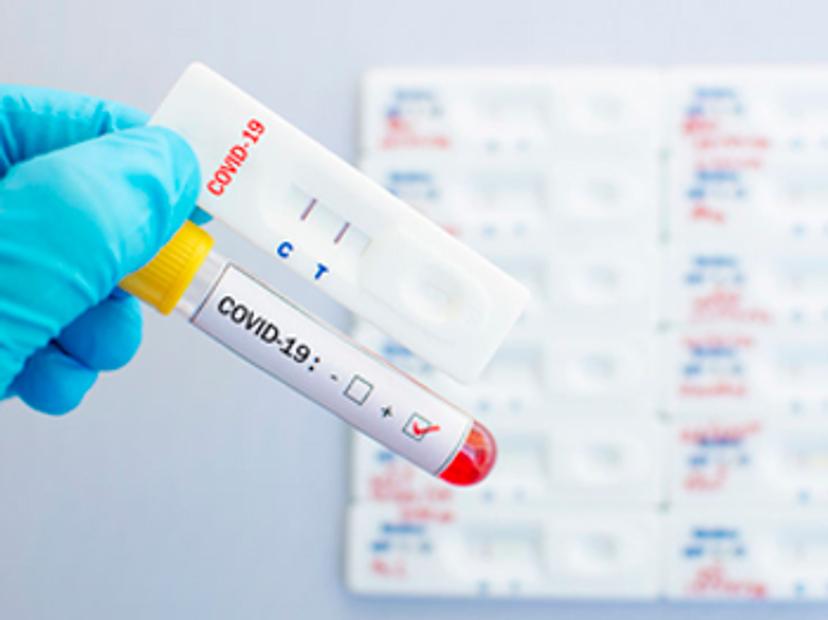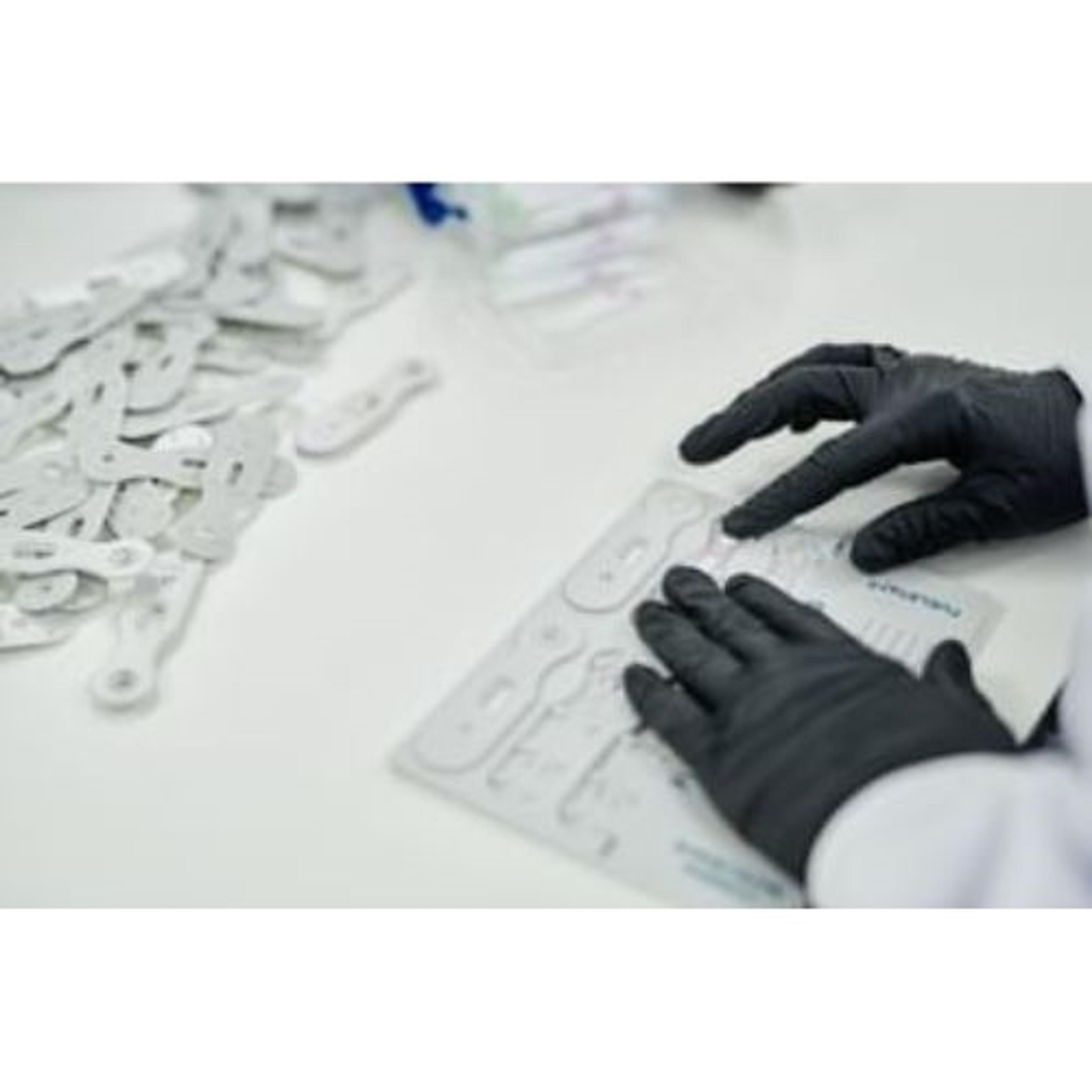Tackle lateral flow assay manufacturing challenges with outsourcing
Learn how to navigate the increasing demands for lateral flow assay technology and gain insight into how to choose the best partner for your manufacturing needs
13 Sept 2023

Lateral flow assays (LFAs) have seen a rise in demand in recent years thanks to their low cost and ease of use. These devices currently represent the most used point-of-care sensors for diagnostics1. Common uses include pregnancy testing and COVID-19 monitoring. Outside of healthcare, applications in environmental monitoring and food testing have also risen in prominence as familiarity with lateral flow platforms has increased.
To meet increasing demands and stay competitive in an expanding market, developers must ensure that their assays can be manufactured to scale and to tight deadlines and budgets. By partnering with a contract development and manufacturing organization (CDMO) it is possible to achieve a quick transition to a commercially manufactured product whilst also taking advantage of improvement opportunities.
In this article, Paul Christopher, Head of Technical Operations at BBI Solutions, discusses how outsourcing of LFA manufacturing can overcome some of the challenges associated with getting a new product to market. Christopher also provides advice on vetting a potential CDMO and examples of how the BBI Solutions technology transfer program has successfully transferred lateral flow products to routine manufacturing.
Partnering for success
When developing and manufacturing LFAs, many aspects need to be considered, from supplier and raw material selection, establishing robust manufacturing processes through to the infrastructure and logistics required to deliver the product on time and in full.
“Partnering with a CDMO and leveraging their experience in these areas is invaluable in terms of preventing problems, minimizing risks, and ultimately meeting timelines,” says Christopher.
For products still in development, Christopher recommends early discussions with the CDMO where “advice on materials or processes can be instrumental in terms of facilitating future transfer to production.” He adds, “the use of standard, well-proven materials and processes not only promotes product robustness but reduces complexity and helps control ongoing production costs.”
“One area where we’ve seen real benefit is where the CDMO supports the development process by preparing small quantities of reagents and components. These reagents and components are not only a valuable resource for the developer which can save development time but importantly ensure that robust, scalable production processes are employed which facilitates transfer to routine production,” explains Christopher.
Transferring the manufacturing site for an established product requires a multidisciplinary team to ensure that equivalent product performance is achieved and that quality and regulatory requirements are met.
Christopher summarizes BBI’s approach, “Our dedicated Transfer team oversees the whole transfer process from initial scoping, planning, and executing verification and validation through to delivery of the final product and its documentation package.”
“BBI’s infrastructure supports this perfectly in terms of resources where the Transfer team draws on services and expertise from its independent regulatory, quality, validation, and engineering teams.”
“BBI’s 130,000 square foot facility has been purpose-built for LF manufacture with dedicated production areas for colloid, conjugate, component preparation, and device assembly, all supported by a comprehensive preventive maintenance system. Material, product, and operator flow has been considered through bespoke design with each process mapped and standardized to drive consistency.”
“With an extensive range of LF products in routine manufacture, BBI’s production group pride themselves on their operational expertise, process control, training systems, and compliance and are a real asset as a receiver of transferred products,” reveals Christopher.
Risks and challenges
“Product stability and assay imprecision are the top two concerns for me when transferring a new product into production,” says Christopher.
“Being able to rely on well-proven production processes, especially for component drying, curing, and packaging, within a strictly controlled environment in terms of both temperature and relative humidity, gives real confidence that product stability concerns tend to only be limited to the specific biologicals in the assay system.”
“Where specific processes for product manufacture differ to standard BBI conditions, risks are assessed upfront and shared with the client. BBI can accommodate a wide range of specific assay production conditions but where risks are highlighted or if there is potential for improving product stability, transfer can involve the early assessment of a number of production conditions. Comparing existing to more standard conditions can be valuable to fully understand inherent product stability constraints and assess options for improvements.” Christopher however stresses that “any implementation or change is agreed with the client and then strictly controlled and validated.”
Control lateral flow imprecision
One of the biggest challenges assay developers come across is the variability that the lateral flow format can introduce. Christopher explains how by working with suppliers and assay developers for over two decades, BBI continues to significantly reduce and control the historic imprecision associated with LFAs significantly.
“By understanding engineering tolerances in strip design, working with suppliers to improve material specifications, and using state-of-the-art production equipment, we're controlling variables to the point of quantitation for some lateral flow products,” states Christopher. “Our understanding of the root cause of assay imprecision has developed through our ‘imprecision budget approach’ where assay variables are assessed, challenged, and understood before being verified through a series of robustness studies. A series of small process improvements combine to give meaningful improvements and additional control over processes. Our results tie back to customer product specifications and corresponding product performance claims.”
“We’re progressing the technology from simple lateral flow systems into well-controlled precision engineered devices and are rising to customer and industry demands and challenges in this respect,” states Christopher.
It's advantageous to have a second source of manufacture, as part of a developers disaster planning and to be able to cope with unforeseen spikes in demand.
Paul Christopher
BBI Solutions
In today's dynamic business environment, companies must consider supplier control, cost reduction, and disaster recovery planning as critical components of their operations. This is particularly true for assay developers who require efficient manufacturing processes and the ability to adapt to spikes in demand. “The reduced cost of purchasing materials that comes with partnering with BBI is passed directly on to our partners,” explains Christopher. “Our ongoing approach to cost containment is proving essential for continued product success and product longevity.”
“In addition to the flexibility to meet demand that outsourcing provides, it is advantageous to have a second source of manufacture, as part of a developers disaster planning and to be able to cope with unforeseen spikes in demand.”
Streamline LFA manufacturing through technology transfer
BBI Solutions' technology transfer program caters to a wide range of customer requirements, from developing and transferring early-stage products to enhancing existing manufacturable products. “When starting from a basic assay system, the transfer process can encompass supply chain control, process development, validation, validation batch manufacture, and routine production,” explains Christopher.
“Where a customer has a fully developed product or a product in routine manufacture with an established supply chain, an expedited transfer process is followed with focus areas driven by any perceived risks.”
Christopher continues, “Customer timelines are our primary focus with the detailed technology transfer program schedule depending on the complexity/stage of production readiness. This can range from anything from three to four months for a standard product that is routinely manufactured, to around six to seven months for a product that needs to be ‘finished’ in terms of its production readiness.”
Throughout the technology transfer process, BBI prioritizes close collaboration with customers to define exactly what their requirements are. “Following definition, we schedule weekly or biweekly meetings with key decisions and actions tracked to ensure effective communication and define and refine product specifications. This approach facilitates any necessary adjustments, addresses any challenges that may arise, and ensures the process sticks to a timeline that aligns with the product's complexity,” says Christopher.
Success stories

Discussing examples of where the technology transfer program has helped assay developers improve their manufacturing process, Christopher points to an example involving a gold conjugate reagent exhibiting significant batch-to-batch variability. “During the transfer process, we opted to redevelop that conjugate in parallel using some of BBI's in-house reagents. A stable, robust conjugate was developed and was subsequently validated and introduced into the product shortly after product transfer,” explains Christopher. “We not only successfully transferred the product which we now routinely manufacture, but we've also improved the product as part of the overall transfer process.”
A common issue that lateral flow developers face is unreliable suppliers, which can lead to delays in products reaching the market. “One developer that we transferred a product for had an antibody supplier that was not hugely reliable. As part of the transfer process, we brought the cell line that was producing the antibodies and transferred that to our antibody manufacturing facility,” says Christopher. “We took over the key raw material manufacture as well as the product manufacture. As a result, the customer now has improved supply chain control, consistent antibody performance between lots, and a stable final product in routine manufacture.”
Choose the right manufacturing partner
For assay developers seeking a manufacturing partner, Christopher advises extensive communication and interaction with potential suppliers. “I would visit the facilities, conduct audits, and assess the company's wider support capabilities, such as engineering, validation, and regulatory expertise.”
Christopher stresses that “a culture of continuous improvement should also be ingrained and visible within the CDMO with quality and service at its core and is essential to ensure long-term success and avoiding stagnation and cost escalation.”
Christopher recommends, “ask potential suppliers about cost containment, they should have a proven record of, and be striving for year-on-year inflation-beating ongoing improvements.”
Having an appropriate quality system is essential, at BBI, our projects and products are managed to ISO13485 standards and CGMP principles for our IVD products with appropriate levels of flexibility to efficiently manage products destined for food safety, veterinary, industrial, environmental or other sectors as appropriate.
Paul Christopher
BBI Solutions
Looking ahead, BBI Solutions aims to further optimize its technology transfer program by emphasizing early engagement with customers. Recognizing the importance of Design for Manufacturing (DFM) principles, Christopher encourages developers to seek manufacturing advice early in the product development cycle. “Get the expertise and input of a CDMO early on in your development cycle so that you can build in DFM features, whether that is a stable, scalable reagent, or a robust production process,” says Christopher. “This approach enables the integration of manufacturing-friendly features, scalability, and cost-effectiveness into the product design, resulting in a reproducible, stable, and commercially viable solution.”
You can learn more about how BBI Solutions technology transfer program can help you with your lateral flow assay manufacturing in this whitepaper >>
References
Sena-Torralba, A. et al. Toward Next Generation Lateral Flow Assays: Integration of Nanomaterials, Chemical Reviews, (2022), 122, 18, 14881–14910. Pubmed

